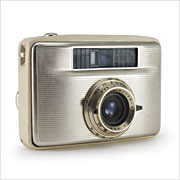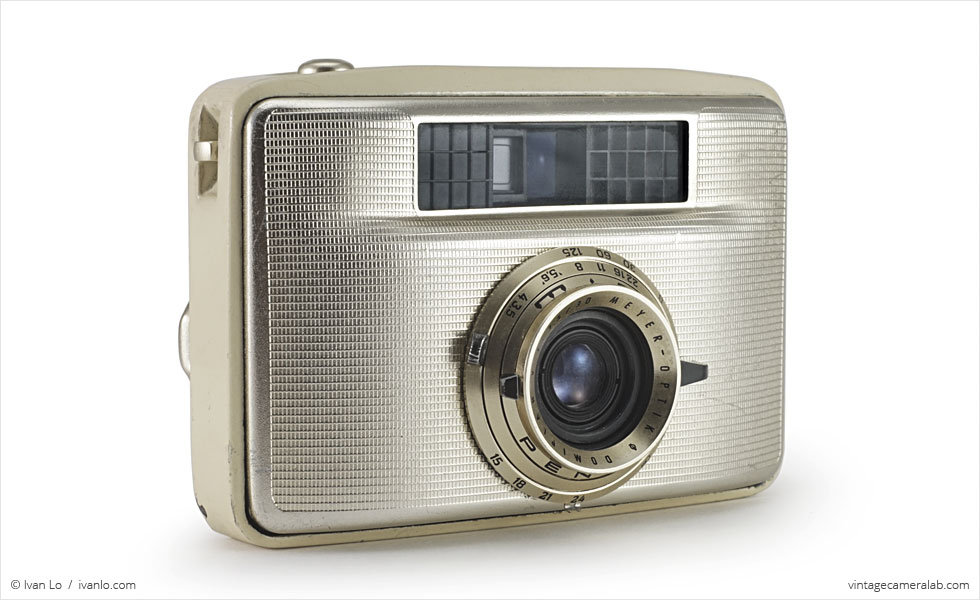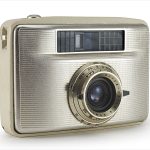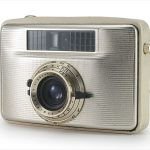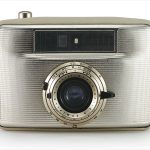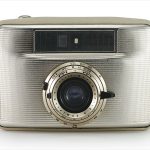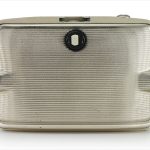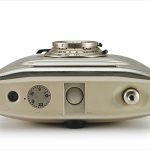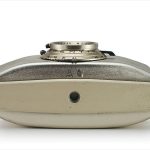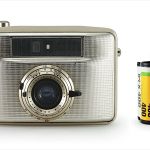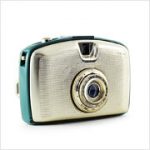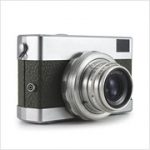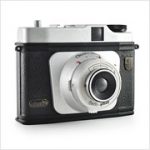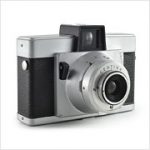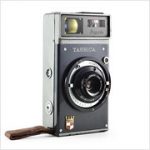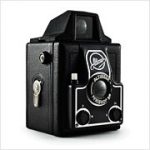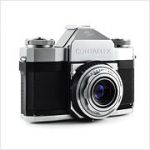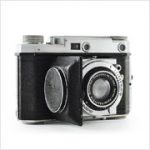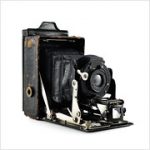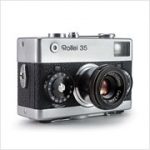Welta Penti II Specifications
| Manufacturer: | VEB Welta Kamera-Werke |
| and later VEB Pentacon | |
| Origin: | East Germany |
| (modern day Germany) | |
| Made in: | Freital and later Dresden, |
| East Germany | |
| (modern day Germany) | |
| Introduced: | 1960 |
| Type: | Subminiature, Viewfinder |
| Format: | 35mm Film (half-frame) |
| Dimensions: | 10.5 x 7.2 x 4.8 cm |
Welta Penti II Overview
The Welta Penti II is a flamboyantly styled 35mm half-frame camera originally manufactured by Welta in the German town of Freital and, after the company became part of Pentacon, in their factory in the nearby city of Dresden. Confusingly, the Penti II has a cheaper, near-identical twin called the Penti I (with the only difference being the absence of the II’s selenium light meter) and both of them are successors to the original Welta Penti (which, to avoid confusion, may also referred to as the “Penti 0”). Like its siblings, the Penti II is designed for Agfa‘s Karat film cartridge as opposed to conventional 35mm film and also comes in a variety of colors including cream, teal, and maroon. As its glitzy appearance may suggest, these cameras were marketed primarily towards women with promotional materials depicting the shimmering Penti II alongside a set of jewelry and a pocketbook.
Clad in gold trim to match the body is the centerpiece of this flashy camera: its Meyer-Optik 30mm f/3.5 Domiplan lens. The top of the outermost ring controls the shutter speed while the bottom is home to a film speed indicator. Moving inward toward the front element, the next ring sets the aperture while the third and innermost ring adjusts the focus. Moving up to the top plate, the most prominent feature is the golden shutter button which is threaded for a cable release. Much like its predecessor, pressing the shutter button will cause a metal rod to pop out from the opposite side the of the camera. Pressing this rod back into the body will then cock the shutter and ready it for the next exposure. Moving across from the shutter button is a cold shoe, an automatic exposure counter, and a flash sync socket. A standard tripod socket is located on the bottom of the camera.
I really appreciate these cameras for their reputation as a refreshing beacon of style and personality amid the sea of somber, relatively uninspiring models like the Dacora Digna and Wirgin Edixa which were marching out of East Germany at the time so I had been itching to get my hands on a Penti II ever since I got the original. They’re not the most beautiful cameras in my collection but they’re a breath of fresh air and are definitely the only golden ones.
Find your very own Welta Penti II on eBay.
McKeown, James M. and Joan C. McKeown’s Price Guide to Antique and Classic Cameras, 2001-2002. (Grantsburg, WI, USA: Centennial Photo Service, 2001), p 532.
“Chemische Fabrik Helfenberg,” Stadtwiki Dresden, https://www.stadtwikidd.de/wiki/Chemische_Fabrik_Helfenberg
“Penti,” Camera Wiki, http://camera-wiki.org/wiki/Penti
